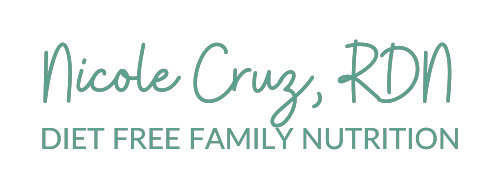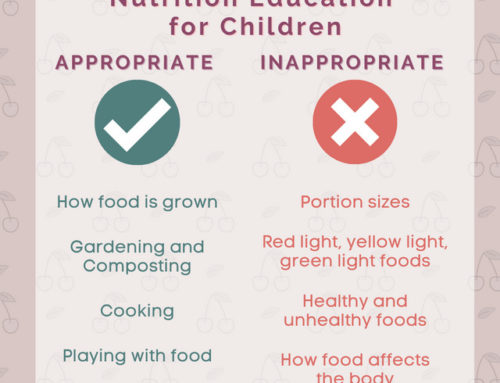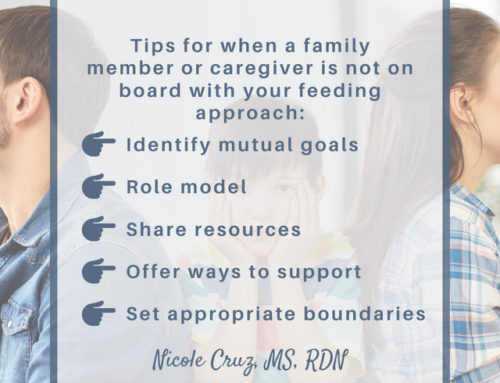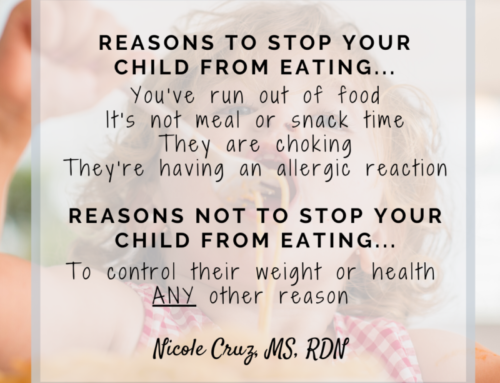Have you ever heard of the concept food neutrality?
The other day I walked in from the store and my son came running in to make sure I got more peppers. He then wanted me to cut them for him to eat right then and there.
Then my daughter started helping me unload the groceries and I heard, “*GASP* Mommy, you got me strawberries!!” in the sweetest and most endearing voice.
Once everything was put away, I made hard-boiled eggs, and my boys were begging for them out of the instant-pot warm and sprinkled with a touch of salt.
They do the exact same thing when I buy pop-tarts or make fresh-baked cookies.
This is food neutrality.
Food neutrality means all foods have the same energetic pull and moral value.
No foods are inherently “good” or “bad” or “healthy” or “unhealthy.” No food is valued over another.
Now, I know you’re probably saying… But Nicole, some food is healthier than other food.
I do agree that food has different nutritional value, and I’m most definitely not saying that cookies and carrots have the same nutrients or even the same amount of nutrition. I absolutely understand they are different.
That is not what food neutrality is about.
Food neutrality is about judgment. It’s removing judgment from the food itself and removing all judgment about oneself for eating it.
Let me explain a bit more…
- First, all food does offer some form of nutrition. Even if it’s candy, it still has carbohydrates. And yes, carbohydrates are a nutrient. They are actually defined as a macronutrient.
- Second, food has more value than just nutrition. Think about pleasure, joy, and memories around food. Like hot summer days running after the ice cream truck for your favorite Pink Panther with gumball eyes or eating your grandma’s cherry pie every year at Thanksgiving. And now every time you hear an ice cream truck you reminisce about the carefree days of your youth or when you see a cherry pie, you think of your Grammy baking in the kitchen. That is value too!
What if those memories were clouded with judgment about food or your body? Might you feel differently about them? And then think, how do you want your child’s memories of food to be?
- Third, when we start labeling food as good or bad, healthy or unhealthy, we apply those same terms to ourselves. This is especially true for children. They only know how to think concretely. They do not understand abstract concepts, and nutrition is abstract.
So…
A carrot is good –> when I eat a carrot I’m good.
A cookie is bad –> when I eat a cookie I’m bad.
But food has no moral value.
And setting up these ideas typically leads to an unhealthy relationship with food involving sneaking, hiding, and secretive eating. Or restrictive eating for the fear of being bad or unhealthy.
- Lastly, health is multifaceted. It can’t be determined by food and exercise, like much of society promotes. Socio-economic status, stress, and genetics (among other things) highly influence health.
When we simplify health into food and exercise and put emphasis solely on those issues, we create more stress. And stress negatively impacts health.
Think: my child goes to the birthday party and really wants a cupcake but is worried they’re being bad for eating one and debates if they should or not… They’re creating more emotional turmoil in their brain and negatively impacting health than just eating the dang cupcake. And even if this isn’t happening yet, the ideas are implanted young and very common once they reach teenage years.
Not to mention that eating intuitively (having food neutrality) tends to lend itself to eating more variety, which is health promoting!
We could chat about this forever, but hopefully you’re at least getting a sense of the purpose and benefits of creating food neutrality.
Your top tips to help your child find food neutrality:
- Talk about all foods positively and with the same energy.
- Avoid terms that separate food, including red light, green light, treat and goodie.
- Offer a variety of foods from different food groups regularly, including typical “treat” food.
- Do not force or require eating any foods, including using a no thank you bite.
- Do not use food as a bribe or reward.
For more on raising an intuitive eater with food neutrality, check out How to Raise an Intuitive Eater: 5 Pitfalls to Avoid.
And for a deeper dive into your most common issues, grab my online workshop: Stress Free Family Eating: Simple Ways to Help Your Child Have a Healthy Relationship with Food.
As always, thank you for joining me and letting me be a part of your journey in creating joyful eating for your family. I look forward to connecting with you soon!









Leave A Comment